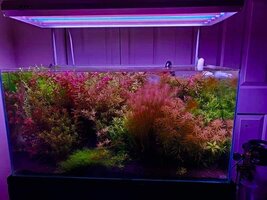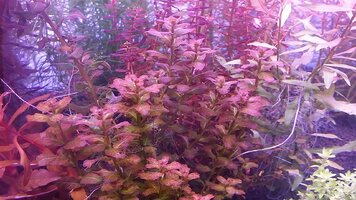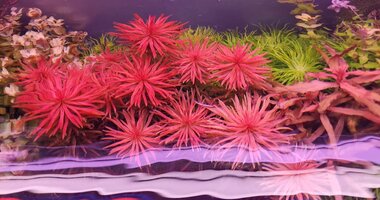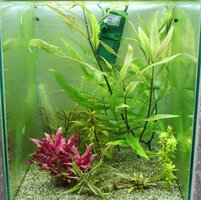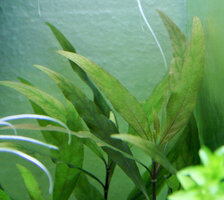These pictures are from my experimental setups, you will find both good and bad results if you closely observe. 99% of the time I have used Ammonium or Urea as my main nitrogen sources.
NO3 is not exceptional either when it comes to causing algae issues. GDA was the most common algae when NO3 was dosed through KNO3 or when NO3 was present in high quantities.
NH4, Urea, KNO3 will all cause GDA and other types of algaes, some nitrogen sources might be more easily accessible or available to the algaes. Urea for example isn't easily available to the algae unless it's rapidly converted into NH4 and NO3. People who dose excess Urea are likely to see GDA and green algae formation on the leaves. This matter gets worse when soil is fairly new and leaching NH4 in the water and adding Urea or NH4 in excess amount on top of that is going to make things worse.
Occasionally, I managed to trigger green algae with the combination of CaNo3, MgNo3, KNo3 and Urea. But soon as I removed CaNo3, KNo3 and only kept MgNo3 and Urea in the mix, the algae goes away. I would except more algae to occur because MgNo3 and Urea mix contained more Urea. If I mix NH4NO3, Urea and KNO3, I would quite often see GDA and if I remove the KNO3 from the mix, the GDA goes away. If I only dose NH4NO3 or Urea in smaller doses, I almost never see any algae issues. if I dose KNO3 in larger quantities, GDA was covering the glass more often.
Nitrogen also needs several other nutrients to form algae, different algaes are form under differnt ratios and quantities of fertilizer or nutrients. Many people still believe that GSA is caused By low PO4, many people still believe that BGA is caused by low NO3, many people still believe that BBA is caused by low CO2. I debunked this in my own experimental setups on several occasions.
So what's the conclusion?
Does NO3 cause algae?
YES
Does Urea cause algae?
YES
Does NH4 cause algae?
YES
Does algae need other nutrients to form different types of algaes, including other Macronutrients and Micronutrients?
YES, Definitely
Does ratio and quantity of nutrients play any role in algae?
YES, Certainly
So, some people dose NO3, Urea or NH4 and still don't get any algae, what's the secret?
Because they know what they are doing.


